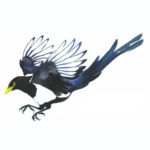East County
Woodbridge Wilderness Area
Do you find the information in this page useful?
Description of the Area
This site has had a long and controversial past, and conditions and hours of access are subject to change. It currently consists of lush riparian woodlands nestled along the south bank of the Mokelumne River in the town of Woodbridge. The canopy is comprised largely of cottonwoods, valley oaks, and live oaks. Willows and buckeye are also widespread. The understory includes blackberry bramble and poison oak in many places. Stinging nettle is plentiful also. Woodbridge Golf Course is on the opposite bank.
How to Get There
From Lodi, turn north at the intersection of Turner Rd and Lower Sacramento Rd toward the community of Woodbridge. At the 3-way stop, turn left (west) onto Mokelumne St. At the roundabout take the first right, which is Woodbridge Rd. Continue west until you come to the intersection with Meadowlark, on your right. Turn here, and park along this short street where it ends at River Meadows Dr. Here you will find the inconspicuous entrance to the park.
NOTE: If you are on the north side of the Mokelumne River, driving westward on Woodbridge Rd, turn left (south) on Lower Sacramento Rd. (If you continue straight on Woodbridge Rd, you will end up at a dead end near the golf course.) Continue south on Lower Sacramento Rd to Mokelumne St. Turn right (west). Continue west past the roundabout until you come to the intersection with Meadowlark, on your right. Turn here, and park along the short street where it ends at River Meadows Dr. The park entrance is in front of you.
From Stockton, come north on I-5 and exit at Turner Rd. Take the frontage road (Thornton Rd) north to Woodbridge Rd and turn right (east). As you approach the Woodbridge town limits, look for the Meadowlark intersection (River Meadows development), and turn left. There is a sign on Woodbridge Rd for the park. The park will be in front of you.
Target Birds
Resident: Wood Duck, Common Merganser, Cooper’s and Red-shouldered hawks, Spotted Sandpiper, Great Horned Owl, Acorn, Nuttall’s, and Downy woodpeckers, Northern Flicker, Belted Kingfisher, Tree Swallow, Oak Titmouse, Hutton’s Vireo, Bushtit, White-breasted Nuthatch, Bewick’s and House wrens, Wrentit, Spotted and California towhees, Song Sparrow, Lesser and American goldfinches.
Summer: Swainson’s Hawk, Western Wood-Pewee, Black Phoebe, Ash-throated Flycatcher, Northern Rough-winged and Barn swallows, Black-headed Grosbeak, Lazuli Bunting, Bullock’s Oriole.
Winter: Wilson’s Snipe, Red-breasted Sapsucker, Red-breasted Nuthatch, Brown Creeper, Pacific Wren, Golden-crowned Kinglet, Hermit and Varied thrushes, Orange-crowned, Yellow-rumped, and Townsend’s warblers, Fox, Lincoln’s, White-crowned, White-throated, and Golden-crowned sparrows, Purple Finch, Pine Siskin.
Migrant: Olive-sided, Willow, and Pacific-slope flycatchers, Cassin’s and Warbling vireos, Blue-gray Gnatcatcher, Swainson’s Thrush, all Western migrant warblers, Western Tanager.
Rarities: Solitary Sandpiper, Hammond’s, Gray, and Dusky flycatchers, Brown Thrasher, Blackpoll and Hooded warblers, Yellow-breasted Chat, Rose-breasted Grosbeak, Green-tailed Towhee.
EBird Hotspot Information
EBird Hotspot – Click Here
Birding At the Site
The entry is between two fenced yards. At the end of the fences, the park opens up into a fairly wild area. All trails from this point forward are dirt, so they may be muddy in wet weather or impassable during high water. From here, you will see two trail signs in front of you on the left. Take the second signed trail, which goes through a meadow area good for hummingbirds in spring and summer. This meadow may become a large sand dune from winter flooding. It then goes through a forest of oaks and cottonwoods at the furthest north point there is an out and back trail (sometimes heavily overgrown—be ready to bushwack) that takes you to a small bluff overlooking the river. There is a firebreak and visible houses to the east. All firebreaks and levee roads are closed to hiking. The return portion of the loop is not well marked and leads you to a firebreak, which cannot be hiked.
For a shorter hike, take the unsigned trail that dives into the woods to your right just beyond the first sign pointing to the trail to the left. This goes through an old burn, good for sparrows and towhees. The trails may be overgrown, but they will loop back to the river. There is much more poison oak on this eastern portion of the property. Another strategy is to continue straight ahead from the park entrance, which will take you directly to the river. Any of these choices can yield good birds.
More Information
Timing: This gated park is only open to the public from 9 am to 4 pm. the first three weekends of the month October through April. May through September it is open every weekend. Severe weather and red flag days the park will be closed. This park has been closed off and on due to acts of vandalism and neighborhood concerns over the very real danger of fire. Please be on your best behavior by signing in and out (if requested) and respecting the rights of the local residents.
Parking: Park along the side of the road
Facilities: There is currently a porta-potty just inside the entrance.
Accessibility: Not wheelchair accessible
Dogs: Not allowed
Bikes: Not allowed
Others: Poison oak is common in many areas, especially on the east side. Do not trespass onto private property.
